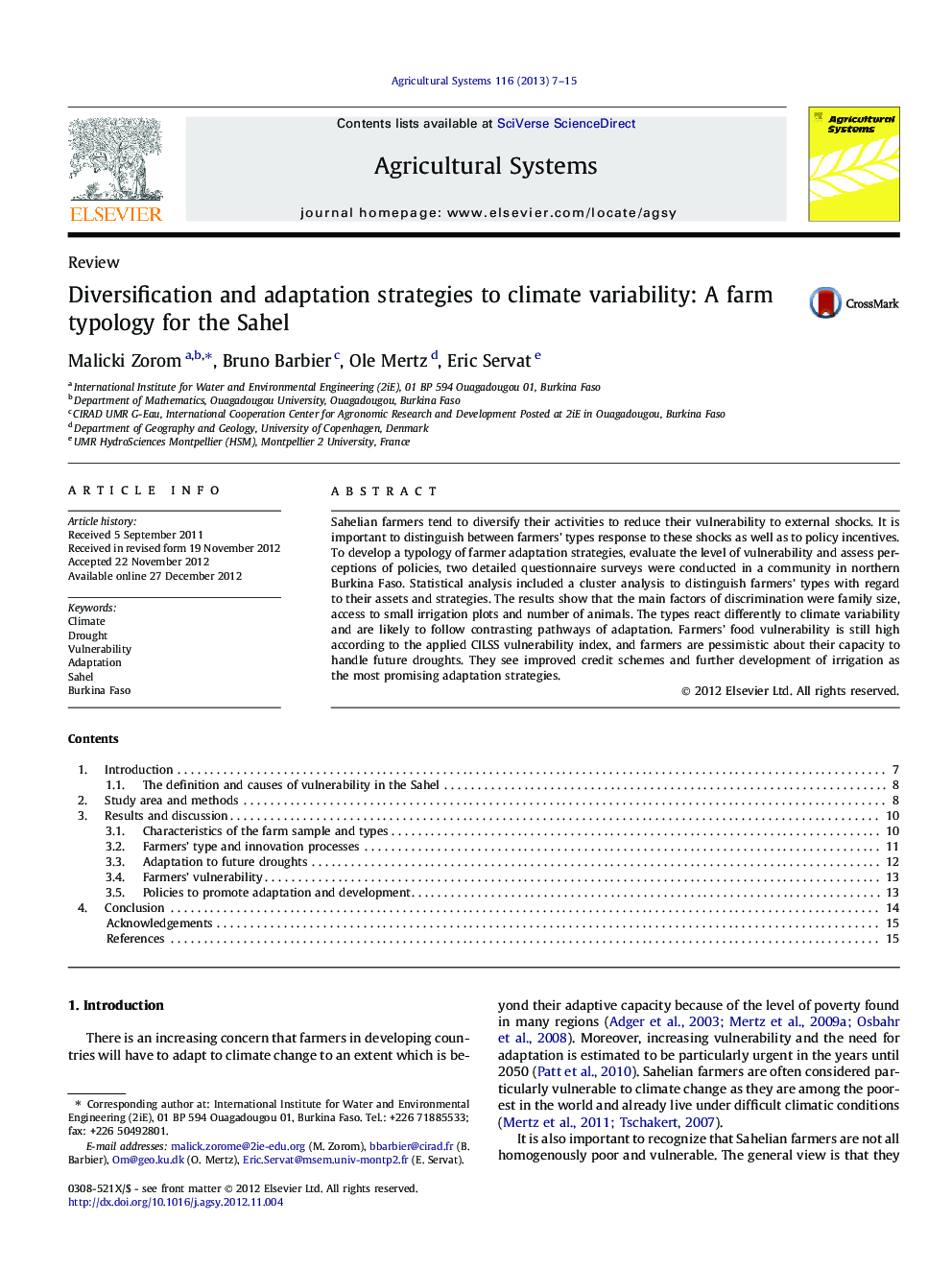| Article ID | Journal | Published Year | Pages | File Type |
|---|---|---|---|---|
| 4491335 | Agricultural Systems | 2013 | 9 Pages |
Sahelian farmers tend to diversify their activities to reduce their vulnerability to external shocks. It is important to distinguish between farmers’ types response to these shocks as well as to policy incentives. To develop a typology of farmer adaptation strategies, evaluate the level of vulnerability and assess perceptions of policies, two detailed questionnaire surveys were conducted in a community in northern Burkina Faso. Statistical analysis included a cluster analysis to distinguish farmers’ types with regard to their assets and strategies. The results show that the main factors of discrimination were family size, access to small irrigation plots and number of animals. The types react differently to climate variability and are likely to follow contrasting pathways of adaptation. Farmers’ food vulnerability is still high according to the applied CILSS vulnerability index, and farmers are pessimistic about their capacity to handle future droughts. They see improved credit schemes and further development of irrigation as the most promising adaptation strategies.
► The cluster analysis helped to distinguish four groups of farmers. ► Gardeners are the less vulnerable, off farm workers were found most vulnerable. ► Overall farmers favor irrigation as the most promising strategy. ► The group of livestock breeders adopts more soil and water conservation techniques. ► Overall Sahelian farmers remain highly vulnerable to climate variability.
